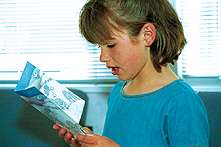New Zealand's National Education Monitoring Project commenced in 1993, with the task of assessing and reporting on the achievement of New Zealand primary school children in all areas of the school curriculum. Children are assessed at two class levels: Year 4 (halfway through primary education) and Year 8 (at the end of primary education). Different curriculum areas and skills are assessed each year, over a four year cycle. The main goal of national monitoring is to provide detailed information about what children can do so that patterns of performance can be recognised, successes celebrated, and desirable changes to educational practices and resources identified and implemented.
In 1996, the second year of national monitoring, four areas were assessed: music, reading, speaking, and aspects of technology. This report presents details and results of the assessments in music. The assessments revealed wide variations in performance on music tasks. Tasks involving individual or group creative work were generally not very well handled. Year 8 students performed little better than year 4 students on many aspects of the performance tasks, but showed greater skills in planning and co-ordinating group performances. Year 8 students had a marked superiority to year 4 students on most tasks which focused on understanding of music and music notation. Responses to the Music Survey revealed generally positive attitudes towards music as an activity, at school and beyond. Students reported that they particularly enjoyed playing instruments and listening to music, but that they had quite limited opportunities to play instruments in school music. Girls performed better on a few tasks at both levels, and also reported greater enjoyment of and involvement in musical activity. This gap narrowed a little between year 4 and year 8. Students in schools with high proportions of Mäori students and/or with low socio-economic decile ratings had lower levels of performance than other students on almost half of the tasks. However, there were very few tasks on which individual Mäori students performed less well than non-Mäori students, and one singing task on which they performed better.
Acknowledgements
|
[ music
menu | top of this page ] |
 Each
year, small random samples of children are selected nationally, then
assessed in their own schools by teachers specially seconded and
trained for this work. Task instructions are given orally by teachers,
through video presentations, or in writing. Many tasks involve the
children in the use of equipment and supplies. Their responses are
presented orally, by demonstration, in writing, or through submission
of other physical products. Many of the responses are recorded on
videotape for subsequent analysis.
Each
year, small random samples of children are selected nationally, then
assessed in their own schools by teachers specially seconded and
trained for this work. Task instructions are given orally by teachers,
through video presentations, or in writing. Many tasks involve the
children in the use of equipment and supplies. Their responses are
presented orally, by demonstration, in writing, or through submission
of other physical products. Many of the responses are recorded on
videotape for subsequent analysis.